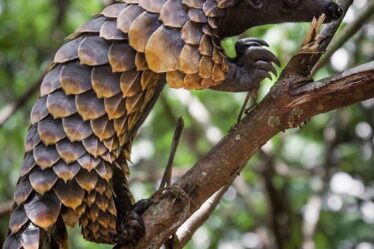
The rhythmic trumpeting of elephants in Kenya, the graceful strides of giraffes across the Botswana savanna, the vibrant flash of a flamingo’s wings in Namibia – these are the sights and sounds that define Africa’s magnificent tapestry of wildlife. But a silent threat disrupts this symphony: climate change.
Species in Peril:
- The Parched Plight of the Black Rhino: Namibia, once a haven for these magnificent creatures, has seen their numbers plummet due to rising temperatures and shrinking waterholes. Imagine a dedicated ranger like Maxatu Tjivikua, his weathered face etched with worry, describing the struggle of rhinos to find sustenance in a parched landscape.
- The Cheetah’s Uncertain Future: In Kenya, cheetahs, the fastest land animal, face a double threat. Heatwaves sap their energy for hunting, while erratic rainfall patterns disrupt the migration of their prey. Scientists like Dr. Amina Abdikadir worry that these spotted wonders may vanish from the Kenyan plains.
Personal Stories on the Frontlines:
- Witness the dedication of Aisha Nantongo, a young woman in Uganda, who monitors chimpanzee populations with hidden cameras. Her story highlights the vital role of local communities in conservation efforts.
- Travel alongside Mfumu Mukuna, a park ranger in Zambia, as he risks his life to prevent poaching fueled by desperate communities struggling with climate-induced hardships.
A Call to Action Through Words:
Imagine a heartbreaking description of a lioness with her cubs, ribs jutting out due to lack of prey. Contrast it with a hopeful narrative of zebras successfully navigating a newly created wildlife corridor in Kenya, mitigating human-wildlife conflict.
Solutions Spark Hope:
- Innovative projects like rainwater harvesting systems in Tanzania provide much-needed hydration for wildlife during droughts.
- Collaborative efforts between governments and NGOs in Ethiopia are restoring degraded land, creating sanctuaries for displaced animals.
A Wider Audience, a Global Responsibility:
- Climate change doesn’t just threaten wildlife; it disrupts food security for entire communities in Africa. A healthy ecosystem provides clean water, fertile lands, and natural resources upon which millions depend.
Cascading Effects: A Domino Fall:
- The decline of herbivores like elephants in Botswana can lead to an overgrazing of vegetation, causing soil erosion and impacting plant life crucial for the entire ecosystem.
Human-Wildlife Conflict: Sharing a Shrinking Space:
- As elephants in Zimbabwe search for water in villages due to drying rivers, tensions rise with farmers struggling to protect their crops. Community education programs like those in South Africa can foster coexistence.
The Economic Roar Silenced:
- Tourism, a major source of income for African nations like Rwanda, relies heavily on wildlife. A decline in animal populations can devastate local economies.
Climate Refugees: Forced Exodus from Eden:
- Pastoral communities in Mali, historically dependent on predictable rainfall patterns for their livestock, are being forced to migrate due to climate change, creating social and humanitarian crises.
The Power of Technology: Eyes in the Sky, Hope on the Ground:
- Drones equipped with thermal cameras in the Central African Republic are revolutionizing anti-poaching efforts by tracking poachers in real-time.
- Satellite imagery in Malawi helps conservationists monitor deforestation, allowing for targeted interventions.
Overall Solutions and Country-Specific Examples:
- Increased investment in renewable energy sources like solar power in countries like Morocco can reduce dependence on fossil fuels, mitigating climate change at its source.
- Stricter regulations and law enforcement against poaching, as seen in Kenya, are crucial for protecting endangered species.
- Encouraging sustainable agricultural practices in countries like Ethiopia can help conserve water and reduce pressure on natural habitats.
By understanding the specific challenges faced by different species and regions, along with the inspiring stories of people working towards solutions, we can create a powerful narrative that compels a global audience to act. The future of Africa’s magnificent wildlife rests on our collective response to climate change’s call.



